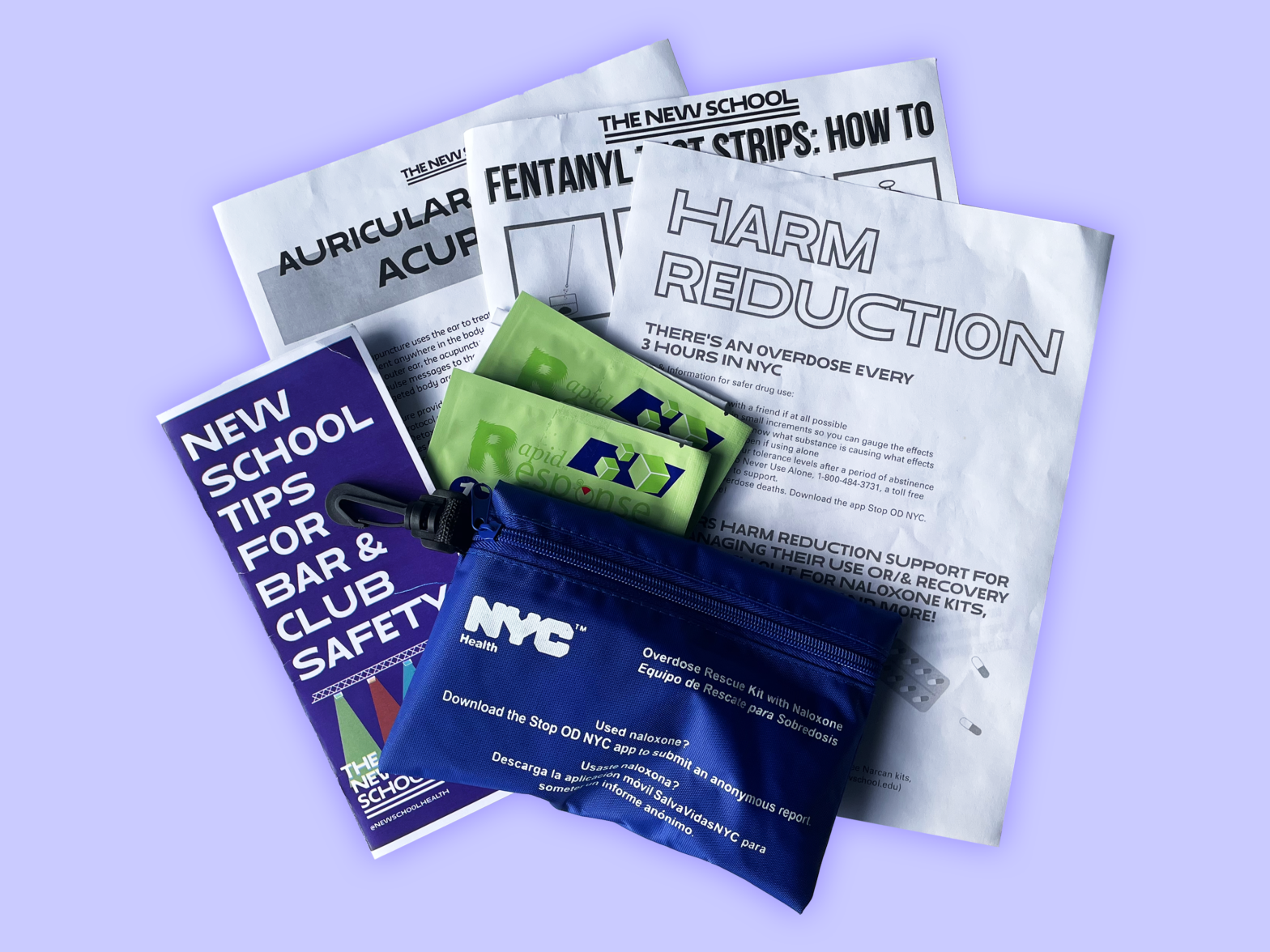Indulging in perpetual experimentation is a hallmark of being a college student. Sometimes, that can include having one’s first experience with drugs. For New Schoolers curious about using those substances, Student Health Services (SHS) offers a harm reduction program to educate and support them on safe usage.
Tamara Oyola-Santiago is the Director of Wellness and Health Promotion at SHS and heads the harm reduction program, which was revitalized in January of this year. She is a public health educator and brought with her almost two decades of experience working in harm reduction in the Bronx, which informed the development of the program at TNS.
Her goal is to provide “holistic health services,” which include supporting students psychologically and physically, empowering them in their decision-making by focusing on their needs, and providing them with the information necessary to make sound choices regarding their health. At SHS, this involves a range of services including drug use and recovery management, along with the provision of fentanyl test strips and naloxone kits.
Test strips are commonly used to check a drug supply for the presence of fentanyl — a synthetic opioid that is 50 times stronger than heroin and commonly used to ‘cut’ street drugs. According to the New York City Department of Health, fentanyl was involved in 81% of the 3026 overdose deaths in the city in 2022.
Naloxone (commonly referred to by its brand name, Narcan) is an opioid overdose reversal treatment administered as a nasal spray. A study published by the National Institutes of Health noted that when administered, narcan is 75 – 100% effective at reversing opioid overdoses. Consequently, both are important parts of the harm reduction tool belt and are distributed to students by request, free of charge through SHS.
Oyola-Santiago doesn’t undertake all this work herself. She is supported by two Peer Health Advocates (PHA), Sean Vegezzi and Sam Conner Self, whose role focuses on determining what students need from SHS by engaging with them directly and relaying that information to staff who can implement them into SHS’s offerings.
Both Vegezzi and Self were drawn to the job as a result of their previous experience with harm reduction services, witnessing first-hand the impact it can have on communities.
Vegezzi, an urban studies and psychology student in the Bachelor’s Program for Adults and Transfer Students said, “having family and friends incarcerated in New York City who had substance use issues before going into carceral facilities and seeing how much the issues were exacerbated while incarcerated,” drove him to want to engage with harm reduction in “a more formal and direct way.”
Self, who is a junior in the psychology program at Lang, grew up learning about the challenges faced by drug users from his parents, one of whom served as the coordinator of the Alcohol and Drug Awareness program at the University of Maine, while the other was a psychiatric nurse in a methadone clinic.
“When I got to The New School, it became very clear to me that I knew more about substance use than a lot of my peers did,” Self said. This disparity motivated him to put his knowledge to use for the betterment of the student community.
Despite both having begun their roles this semester, Vegezzi and Self are enthusiastic about the future of the program. They have already been involved in organizing naloxone training sessions in the residence halls. Self is also working on putting together programming for a “week of wellness” toward the end of the semester. Vegezzi was recently certified in auricular therapy — an ear acupuncture technique used to relieve pain and relax the body — and is hoping to create a program for students and staff to do the same.
While the decentralized nature of TNS’s campus can pose a challenge in terms of conducting outreach to all parts of the university, Oyola-Santiago said that the program has been successful so far, with meeting requests being “frequent enough that I would say that harm reduction has become one of the pillars of what wellness and health promotion is providing on campus.”
According to her, TNS has always been a pioneer in New York state, as it was the first university to register with the New York State Department of Health to become an Opioid Overdose Prevention Program in July 2015. As SHS continues developing its harm reduction offerings, Oyola-Santiago hopes that “harm reduction can be a healthy part of exploration and self-discovery” on campus.








Leave a Reply